
Militia Company of District II under the Command of Captain Frans Banninck Cocq, also known as The Shooting Company of Frans Banning Cocq and Willem van Ruytenburch, but commonly referred to as The Night Watch, is a 1642 painting by Rembrandt van Rijn. It is in the collection of the Amsterdam Museum but is prominently displayed in the Rijksmuseum as the best-known painting in its collection. The Night Watch is one of the most famous Dutch Golden Age paintings.
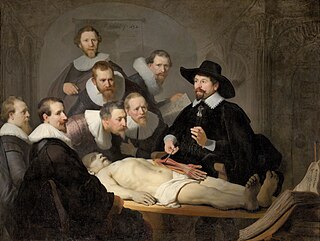
The Anatomy Lesson of Dr. Nicolaes Tulp is a 1632 oil painting on canvas by Rembrandt housed in the Mauritshuis museum in The Hague, the Netherlands. It was originally created to be displayed by the Surgeons Guild in their meeting room. The painting is regarded as one of Rembrandt's early masterpieces.
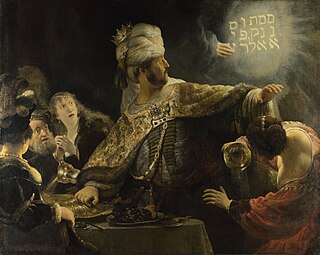
Belshazzar's Feast is a major painting by Rembrandt now in the National Gallery, London. The painting is Rembrandt's attempt to establish himself as a painter of large, baroque history paintings. The date of the painting is unknown, but most sources give a date between 1635 and 1638.

Rembrandt Harmenszoon van Rijn, usually simply known as Rembrandt, was a Dutch Golden Age painter, printmaker and draughtsman. An innovative and prolific master in three media, he is generally considered one of the greatest visual artists in the history of art. It is estimated Rembrandt produced a total of about three hundred paintings, three hundred etchings and two thousand drawings.
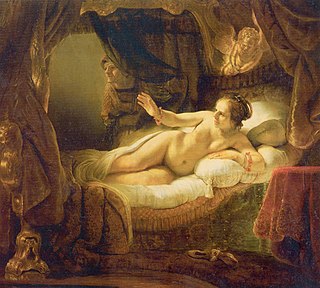
Danaë is a painting by the Dutch artist Rembrandt, first painted in 1636, but later extensively reworked by Rembrandt, probably in the 1640s, and perhaps before 1643. Once part of Pierre Crozat's collection, it has been in the Hermitage Museum, in St. Petersburg, Russia since the 18th century.

The Prodigal Son in the Brothel or The Prodigal Son in the Tavern or Rembrandt and Saskia in the parable of the prodigal son is a painting by the Dutch master Rembrandt. It is now in the Gemäldegalerie Alte Meister of Dresden, Germany. It is signed "REMBRANDT F.".

The Conspiracy of Claudius Civilis is an oil painting by the Dutch painter Rembrandt, c. 1661–62, which was originally the largest he ever painted, at about five by five metres in the shape of a lunette. The painting was commissioned by the Amsterdam city council for the Town Hall. After the work had been in place briefly, it was returned to Rembrandt, who may have never been paid. Rembrandt drastically cut down the painting to a quarter of the original size to be sold. It is the last secular history painting he finished.
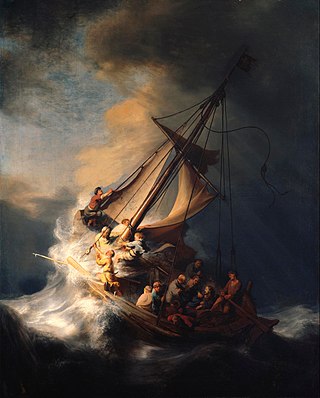
Christ in the Storm on the Sea of Galilee is a 1633 oil-on-canvas painting by the Dutch Golden Age painter Rembrandt van Rijn. It is classified as a historical painting and is among the largest and earliest of Rembrandt's works. It was purchased by Bernard Berenson for Isabella Stewart Gardner in 1869 and was displayed at the Isabella Stewart Gardner Museum in Boston before its theft in 1990; it remains missing. The painting depicts the biblical event in which Jesus calmed the storm on the Sea of Galilee, as is described in the fourth chapter of the Gospel of Mark. It is Rembrandt's only seascape.

Aristotle with a Bust of Homer, also known as Aristotle Contemplating a Bust of Homer, is an oil-on-canvas painting by Rembrandt that depicts Aristotle wearing a gold chain and contemplating a sculpted bust of Homer. It was created as a commission for Don Antonio Ruffo's collection. It was bought and sold by several collectors until it was eventually purchased by the Metropolitan Museum of Art. The mysterious tone in the painting has led several scholars to different interpretations of Rembrandt's theme.
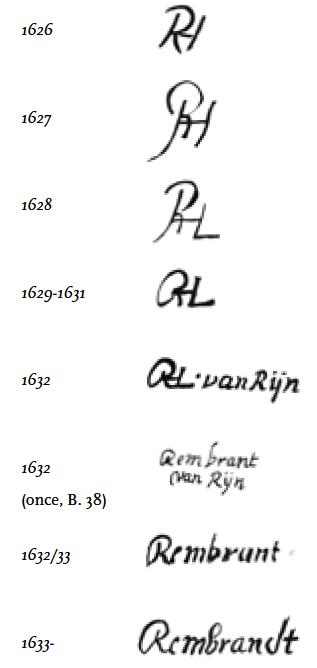
The Rembrandt Research Project (RRP) was an initiative of the Nederlandse Organisatie voor Wetenschappelijk Onderzoek (NWO), which is the Netherlands Organization for Scientific Research. Its purpose was to organize and categorize research on Rembrandt van Rijn, with the aim of discovering new facts about this Dutch Golden Age painter and his studio. The project started in 1968 and was sponsored by NWO until 1998. Research continued until 2014. It was the authority on Rembrandt and had the final say in whether a painting is genuine. The documentation generated by the project was transferred to the Netherlands Institute for Art History and renamed the Rembrandt Database.

The Polish Rider is a seventeenth-century painting, usually dated to the 1650s, of a young man traveling on horseback through a murky landscape, now in The Frick Collection in New York. When the painting was sold by Zdzisław Tarnowski to Henry Frick in 1910, there was consensus that the work was by the Dutch painter Rembrandt. This attribution has since been contested, though those who contest it remain in the minority.
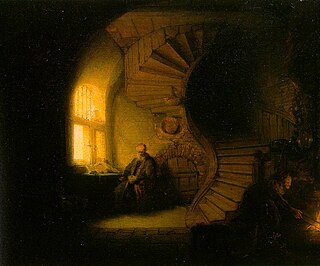
Philosopher in Meditation, recently renamed Philosopher in Contemplation by the museum, is the traditional title of an oil painting in the Musée du Louvre, Paris, that is attributed to the 17th-century Dutch artist Rembrandt.

A Polish Nobleman is a 1637 painting by Rembrandt depicting a man in a costume of Polish szlachta (nobility). The identity of the subject of the painting is unclear, and has given rise to several different interpretations. The view that the figure's dress is clearly Polish is not universally held and it may have been a self-portrait.

Self-Portrait at the Age of 34 is a self-portrait by Rembrandt, dating to 1640 and now in the National Gallery in London. The painting is one of many self-portraits by Rembrandt, in both painting and etching, to show the artist in a fancy costume from the previous century. In this case specific influences in the pose have long been recognised from Raphael's Portrait of Baldassare Castiglione and Titian's A Man with a Quilted Sleeve in the National Gallery. Rembrandt saw both of these in Amsterdam, in his day the centre of Europe's art trade, and made a sketch of the Raphael, with its price.

Slaughtered Ox, also known as Flayed Ox, Side of Beef, or Carcass of Beef, is a 1655 oil on beech panel still life painting by Rembrandt. It has been in the collection of the Louvre in Paris since 1857. A similar painting is in Kelvingrove Art Gallery and Museum, Glasgow, possibly not created by Rembrandt himself but probably by one of his pupils, perhaps Carel Fabritius. Other similar paintings by Rembrandt or more likely his circle are held by museums in Budapest and Philadelphia.

The Portrait of Dirck van Os is a later painting by Rembrandt (1606-1669), created circa 1658. It is currently in the permanent collection of the Joslyn Art Museum in Omaha, Nebraska.

Suffer little children to come unto me or Let the Little Children Come to Me, is a painting attributed to the Dutch painter Rembrandt. The subject of the portrait is the teaching of Jesus about little children and it is estimated that Rembrandt painted it in Leiden in the 1620s.

The Preacher Eleazar Swalmius is a 1637 oil-on-canvas painting by the Dutch artist Rembrandt. It is currently owned by the Royal Museum of Fine Arts in Antwerp. The painting has been certified a real Rembrandt. The painting was listed in 1727 in the catalog of the Duke of Orléans collection, as a portrait of an Amsterdam mayor by Rembrandt. It remained in the noble family's possession until 1792, when Duke Louis-Philippe-Joseph sold the entire collection to finance his political career and pay off debts. The painting passed through several English collections into the hands of the Bourgeois brothers, art dealers from Cologne, who sold the painting as an original Rembrandt to the museum in 1886. The painting was stored away for a long time due to doubts cast over its authenticity.
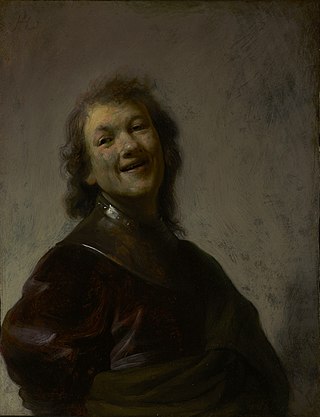
Rembrandt Laughing is a c. 1628 oil on copper painting by the Dutch painter Rembrandt van Rijn. It is an elaborate study of a laughing face, a tronie, and, since it represents the painter himself, one of over 40 self-portraits by Rembrandt, probably the earliest elaborate one. The painting, which was only recently discovered, is now in the J. Paul Getty Museum, California.



















